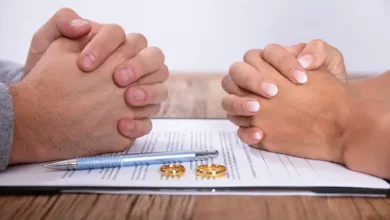California Personal Injury Lawsuit Process

Personal Injury Lawsuit, Personal injury cases can be complex and overwhelming, especially if you’re unfamiliar with the legal process. If you’ve been injured in California due to someone else’s negligence, understanding the personal injury lawsuit process is crucial. This article will guide you through the key steps and considerations involved in pursuing a personal injury lawsuit in California.
Before delving into the legal process, it’s important to establish a clear understanding of personal injury cases. In general, personal injury refers to harm caused to an individual’s physical or emotional well-being due to the negligent or intentional actions of another party. Personal injury cases can arise from various incidents, including car accidents, slips and falls, medical malpractice, and product defects.
Read More: 7 Important Work of Personal Injury Lawsuits in the USA
Statute of Limitations in California
One of the first considerations in pursuing a personal injury lawsuit is the statute of limitations. This refers to the time limit within which a lawsuit must be filed. In California, the statute of limitations for personal injury cases is typically two years from the date of the injury or discovery of the injury. It’s essential to adhere to these deadlines, as failing to file within the prescribed time frame can result in your case being dismissed.

Steps in the Personal Injury Lawsuit Process
- Consultation with an attorney: The initial step in the personal injury lawsuit process is to consult with an experienced personal injury attorney. They will evaluate the merits of your case and advise you on the best course of action.
- Investigation and evidence gathering: Once you’ve engaged an attorney, they will investigate the circumstances surrounding your injury. This may involve gathering evidence such as medical records, accident reports, witness statements, and expert opinions.
- Negotiation and settlement: In many cases, personal injury lawsuits are resolved through negotiation and settlement. Your attorney will engage in negotiations with the responsible party’s insurance company to seek fair compensation for your injuries and damages.
- Filing a lawsuit: If a settlement cannot be reached, your attorney will proceed with filing a lawsuit on your behalf. This involves drafting a complaint and formally initiating the legal process.
- Discovery phase: Once the lawsuit is filed, both parties engage in the discovery phase.
During the discovery phase, both parties exchange information and evidence relevant to the case. This may include interrogatories (written questions), requests for documents, and depositions (recorded interviews) of witnesses and involved parties.
- Mediation or settlement conferences: Prior to proceeding to trial, the court may encourage or require the parties to participate in mediation or settlement conferences. These sessions aim to facilitate a resolution without going through a lengthy trial process. A neutral third-party mediator helps the parties negotiate and reach a mutually acceptable agreement.
- Trial: If a settlement cannot be reached through mediation, the case will proceed to trial. During the trial, both sides present their arguments and evidence to a judge or jury. The judge or jury evaluates the evidence, listens to witness testimonies, and determines liability and damages.
- Verdict and potential appeals: Once the trial concludes, the judge or jury will deliver a verdict. If you win the case, you may be awarded compensation for your injuries and damages. However, either party has the right to appeal the verdict if they believe errors were made during the trial.
Factors Affecting Personal Injury Lawsuits in California
Several factors can impact personal injury lawsuits in California. It’s crucial to be aware of these considerations to navigate the legal process effectively:
- Comparative negligence: California follows a pure comparative negligence rule. This means that even if you were partially at fault for the accident, you can still recover damages. However, your compensation will be reduced proportionally to your degree of fault.
- Contributory negligence: Some states follow a contributory negligence rule, which completely bars recovery if the injured party is found even slightly responsible for the accident. California’s pure comparative negligence rule is more favorable to plaintiffs.
- Proving negligence and fault: To succeed in a personal injury lawsuit, you must demonstrate that the defendant owed you a duty of care, breached that duty, and caused your injuries. Gathering strong evidence and presenting a clear case of negligence is essential.
Compensation in Personal Injury Lawsuits
When pursuing a personal injury lawsuit, you may be eligible for various types of compensation, including:
- Economic damages: These include medical expenses, lost wages, property damage, and other tangible financial losses directly resulting from the injury.
- Non-economic damages: Non-economic damages compensate for intangible losses such as pain and suffering, emotional distress, loss of enjoyment of life, and loss of consortium.
- Punitive damages: In cases involving egregious negligence or intentional misconduct, punitive damages may be awarded to punish the defendant and deter similar behavior in the future.
Hiring an Attorney for a Personal Injury Lawsuit
Hiring an experienced personal injury attorney is crucial for navigating the complex legal process and maximizing your chances of receiving fair compensation. Most personal injury attorneys work on a contingency fee basis, meaning they only get paid if you win your case. This arrangement enables individuals with limited financial resources to access quality legal representation.
Conclusion
The personal injury lawsuit process in California can be intricate, but understanding the key steps and considerations involved is essential. From the initial consultation to the resolution of your case, each stage requires careful attention to detail, strong evidence, and skilled legal representation. By familiarizing yourself with the process outlined in this article, you can approach your personal injury lawsuit with confidence and seek the compensation you deserve.
Read More: PERSONAL INJURY LAW SERVICES IN NYC

FAQs
How long does a personal injury lawsuit typically take in California?
The duration of a personal injury lawsuit varies depending on the complexity of the case, the willingness to settle, and court availability. It can range from several months to several years.
What types of evidence are crucial in a personal injury case?
Key evidence includes medical records, accident reports
Can I file a personal injury lawsuit if I was partially at fault for the accident?
Yes, you can still file a personal injury lawsuit in California even if you were partially at fault. However, your compensation will be reduced based on your percentage of fault.
What should I do if I don’t have money to hire an attorney for my personal injury case?
Many personal injury attorneys work on a contingency fee basis, meaning they only get paid if you win your case. This allows individuals without upfront funds to access quality legal representation.
Are there any exceptions to the statute of limitations for personal injury cases in California?
In certain circumstances, exceptions to the statute of limitations may apply. For instance, if the injury was not immediately discovered or if the injured party is a minor, the time limit to file a lawsuit may be extended.











